Getting your feet wet in the world of home-building? Bravo! But before you dive headfirst into the dreamy blueprints of your future abode, it’s crucial you understand the nuts and bolts of new construction loans. These financial beasts are a different animal than your typical mortgage, and being blindsided is no way to start a home-building journey. Let’s strip away the mystery and lace up for a detailed walk-through of the eye-opening facts about construction financing.
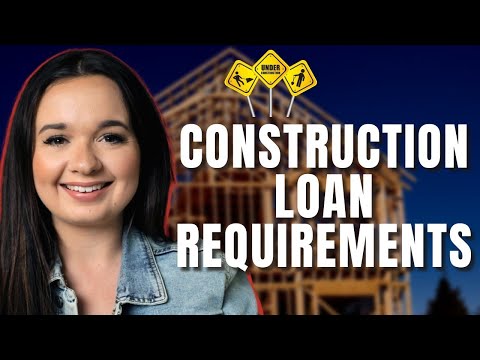
The Surprising Complexity Of New Construction Loan Approval Processes
When we talk about getting a new construction loan, you might think the process is similar to a traditional mortgage. Think again, my friend! Lenders, like the bigwigs at Wells Fargo and Bank of America, are on the lookout for the creme de la creme of borrowers because, let’s be honest, they don’t fancy losing their shirts over a half-built house that looks like it’s been through a toddler tantrum.
First off, you’ll need a credit score that’s more buff than the average gym enthusiast. We’re talking Arnold Schwarzenegger in his prime! If your credit score isn’t strutting its stuff, then you’re facing an uphill battle. Second, imagine you’re headed to a fancy dinner and you’ve got to pay a cover charge just to get in — that’s your down payment, which needs to be hefty. Often, construction loans want you to chip in a bigger chunk of change upfront compared to traditional home loans.
Then, there’s the detailed construction plan. Your lender isn’t interested in your napkin sketches. They want an epic saga of details, from the type of doorknob to the color of the tiles. It’s less HGTV, more ‘War and Peace’. The moral of the story? Construction loan approval is like getting into an Ivy League school — only the best will do.
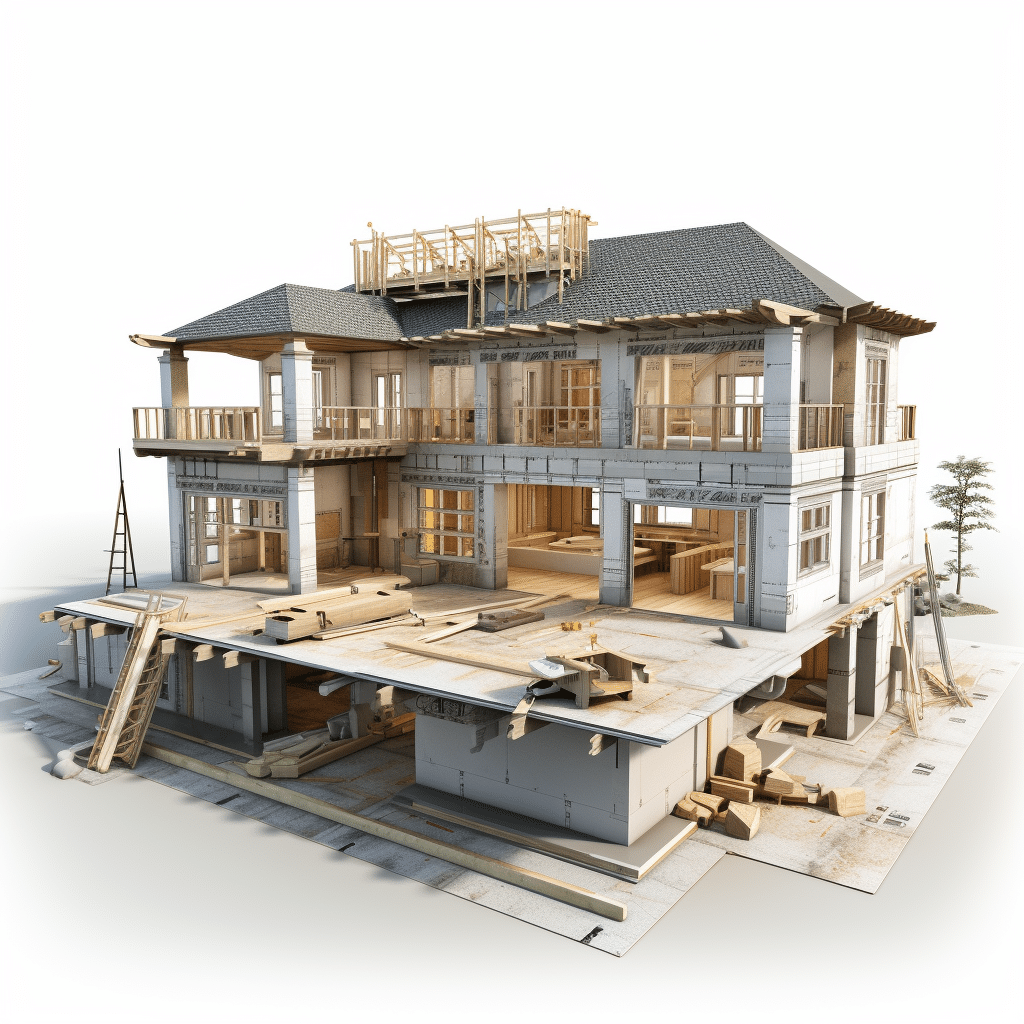
Builder Loan Interest Rates May Shock You
Hold onto your hard hats because the interest rates on builder loans could send a jolt through your budget. Unlike your usual mortgage counterpart, construction loans come with a spicy kick of higher rates due to their variable nature, swinging with the rhythm of the prime rate like a pendulum on a grandfather clock.
Why? It’s riskier for lenders — like putting all your chips on red at the roulette table. If rates shoot up, you might watch your monthly payments balloon like a kid’s party decoration. JPMorgan Chase and U.S. Bank, for example, will offer rates that look nothing like those sweet, sweet fixed mortgages you’ve been eyeing. And if the prime rate is feeling particularly temperamental, expect your payments to wobble like a weeble.
Bottom line: if you’re not ready for a ride that’s more rollercoaster than carousel, the builder loan’s higher and fluctuating rates could give you more than just butterflies in your stomach.

| **Feature** | **Description** |
|---|---|
| Loan Type | New Construction Loan |
| Purpose | To finance the materials and labor needed for building a new home before obtaining permanent mortgage financing |
| Interest Rate Type | Variable, usually tied to the prime rate |
| Interest Rate Comparison | Higher than traditional mortgage rates |
| Interest Rate Trend | Fluctuates over time, potentially increasing or decreasing monthly payments |
| Payment Schedule | Begins as funds are disbursed to the builder, before home completion or settlement |
| Loan Term | Typically ranges from 6 months to 1 year during construction period; then, the borrower must secure permanent financing or pay off the loan |
| Loan-to-Value Ratio (LTV) | Usually up to 80% of the project cost |
| Down Payment | Generally higher than traditional mortgages, ranging from 20-30% of the project cost |
| Primary Benefit | Enables borrowers to fund the construction of a custom home prior to obtaining a traditional mortgage |
| Secondary Benefits | Potential for borrower to influence design choices and construction materials; may include interest-only payment options |
| Closing Costs | May include one set of closing costs before construction and another upon transitioning to a permanent mortgage |
| Borrower Considerations | Must be prepared for the potential variability in monthly payments and the higher overall cost compared to traditional mortgages |
| Bridging to Permanent Financing | A bridge loan may be necessary if permanent financing isn’t secured by the end of the construction loan term |
Construction Home Loans Often Come with Hidden Fees
Prepare to dig a little deeper into those pockets; construction home loans adore those ‘surprise’ costs that everyone loves — said no one ever. Like a magician pulling a rabbit out of a hat, here come inspection fees, permit fees, and the infamous loan origination fees, hopping into your overall financial plan.
This is where local heroes, your friendly neighborhood credit unions, or regional banks, can provide a clearer picture with more upfront honesty about the extra costs. But mind you, these aren’t pennies and dimes — they add pounds to the load you’re already carrying.
To avoid going down the rabbit hole, here’s a tip: put on your planning pants and add a generous sprinkle of foresight into your budget stew. That way, the hidden fees won’t blindside you and leave your finances looking like a game of Jenga on a wobbly table.
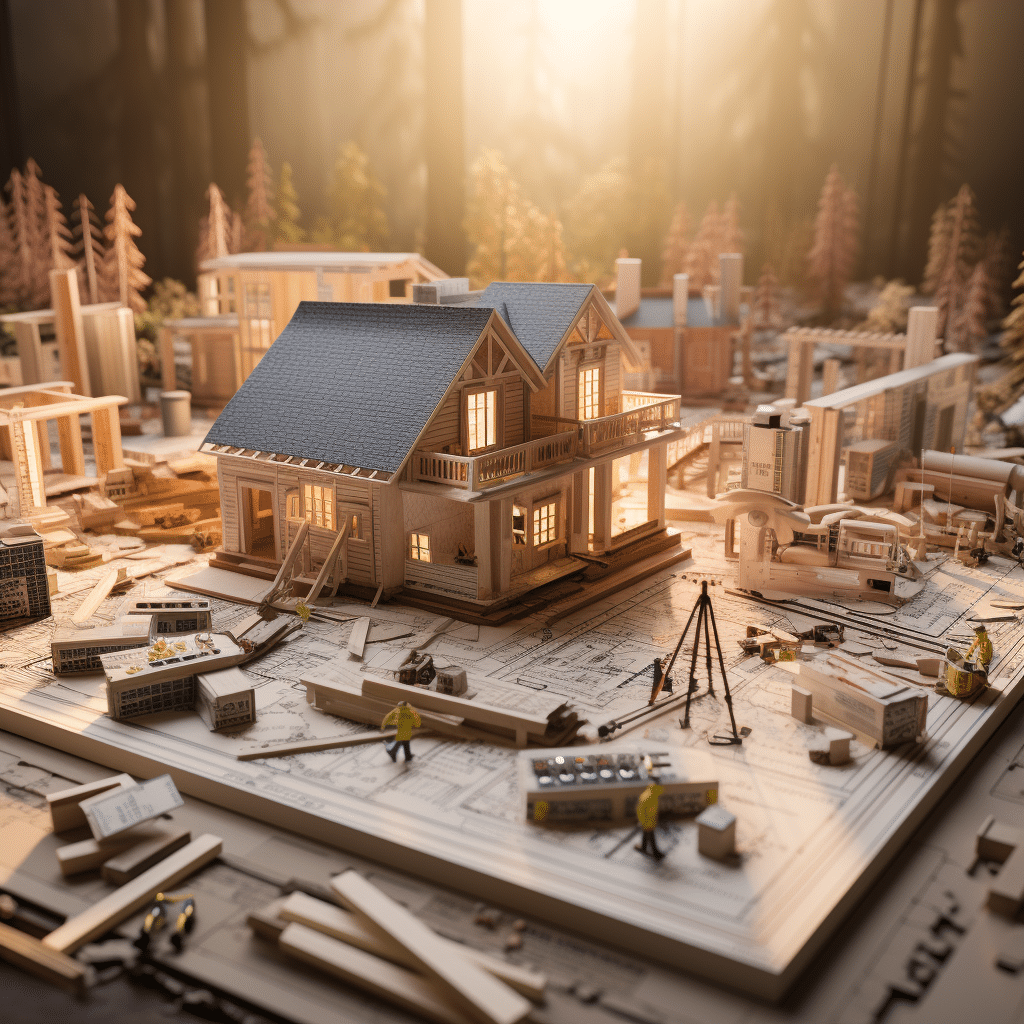
The Lesser-Known Flexibility of Construction Loan Terms
Don’t let the stiff collar of construction loans fool you — there’s some flexibility in that fiber! It’s not common knowledge, but some lenders offer a twist on the plot with draw schedules and interest-only payment periods that could make a contortionist jealous — yes, I’m looking at you, PNC Bank and TD Bank.
How do these bendy terms help you, the future proud homeowner? Let’s say you’re building this fantastic dream home, but money’s tight as a drum. With flexible draw schedules, you only get charged interest on the funds you’ve used — not the entire pile of cash sitting in the lender’s vault. And during construction, interest-only payments can be the financial breather you didn’t know you needed.
This flexibility can be a game-changer, giving you the room to stretch your dollars and plan your next move without feeling like you’re stuck in a financial straitjacket.
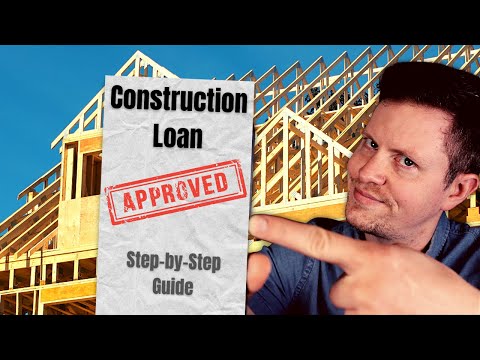
The Reality Behind Construction Loans and Builder Reliability
Now, let’s talk turkey. Your builder’s reliability is more important than the finale in a Telenovela. Lenders, such as the watchful eyes at SunTrust, put your chosen contractor under the microscope. They’re not just looking at their charming smile or smooth sales pitch; they’re peering into their fiscal fitness and digging up the dirt on their track record.
Choosing a builder is like picking your dance partner for the mortgage waltz — step on each other’s toes, and the whole routine falls apart. Getting hitched to an unreliable contractor is the financial equivalent of a shotgun wedding with a Vegas Elvis — impulsive and potentially regrettable.
So, pick a builder who’s as sturdy as a steel beam and as reputable as your grandma’s apple pie. Otherwise, you’ll be watching your dream home — and your sanity — crumble like a poorly baked cake.
Conclusion
Folks, that’s the skinny on new construction loans. Just like the boy scouts, you gotta be prepared. Know the realities of high rates, fluctuating payments, and hidden fees — it’s not just about picking out tile patterns and paint colors. Due diligence and financial planning aren’t just fancy buzzwords; they’re your lifelines.
When contemplating taking that leap into construction loans, ensure you approach the jump with eyes wide open and a parachute strapped securely. With a healthy dose of reality checks and a dollop of strategic planning, you’ll be well on your way to building not just a house, but a home sweet home.
Alright, now that you’re armed with knowledge that’s as solid as the foundation of your future casa, it’s time to start planning with precision and insight. And remember, in the sea of loans, new construction loans are the Moby Dick — hard to tackle but majestic once you’ve got the hang of it.
So buckle up, dear reader, for a constructively enlightening mortgage adventure!
Unveiling the Mysteries of a New Construction Loan
Alright, folks! Strap in because you’re about to dive into some seriously mind-boggling trivia about new construction loans that might just make your head spin like a freshly laid cement mixer. And trust me, handling a new construction loan is about as easy as nailing a jelly to the wall—messy but worth it if you know what you’re doing!
Fact 1: The Blueprint Isn’t Just for Builders!
You might think that the complex blueprints are only for the hard-hatted crew, but when it comes to securing a new construction loan, your financial blueprint needs to be just as detailed. Now, buckle up and hold on tight because understanding How Does a construction loan work is like trying to understand the offside rule in soccer—once you get it, you’re golden, but it’s a doozy to learn!
Fact 2: Don’t Count Your Chickens – Or Your Rooms – Before They Hatch!
Here’s the kicker: A new construction loan can be more unpredictable than a plot twist in the best football Movies you’ve ever seen. You may be envisioning a mansion with rooms galore, but until that loan is nailed down, keep your dream under construction. Make sure you’re not buying those fancy dado rails just yet!
Fact 3: Interest, But Not The Fun Kind!
Get this: You’re only paying the interest on the amount you draw—not on the full loan. It’s like buying peso Pluma Tickets for the big match but only paying for each round you actually watch. Seems fair, right? But remember, once the whole thing is built, you’re footing the full bill!
Fact 4: There’s a Solar Watch, and Then There’s Your Loan Timeline
Ever seen a solar watch? They’re super cool, eco-friendly, and they tell you the time powered by sunlight! Your new construction loan also has a timeline, and boy, it’s as crucial as making sure your solar watch has enough light. You’ve got a limited window to turn that architectural dream into something you can actually open the front door to—so no dilly-dallying!
Fact 5: Going from New Build to Mortgage is Like Graduating from School
Hold onto your hard hats because transitioning from a construction loan to a regular mortgage is akin to rookie Feds finally hitting the big leagues. It’s like you’ve been wearing the training wheels, and now you’re stepping up to the major task. This is not just a walk in the park—it’s more like a victory lap after all that hard graft!
So there you have it! Five shocking facts about new construction loans that could throw you for a loop. And while these little know-hows might leave you with more questions than Marissa Mowry at a post-match press conference, remember: knowledge is the key to nailing it. Happy building!
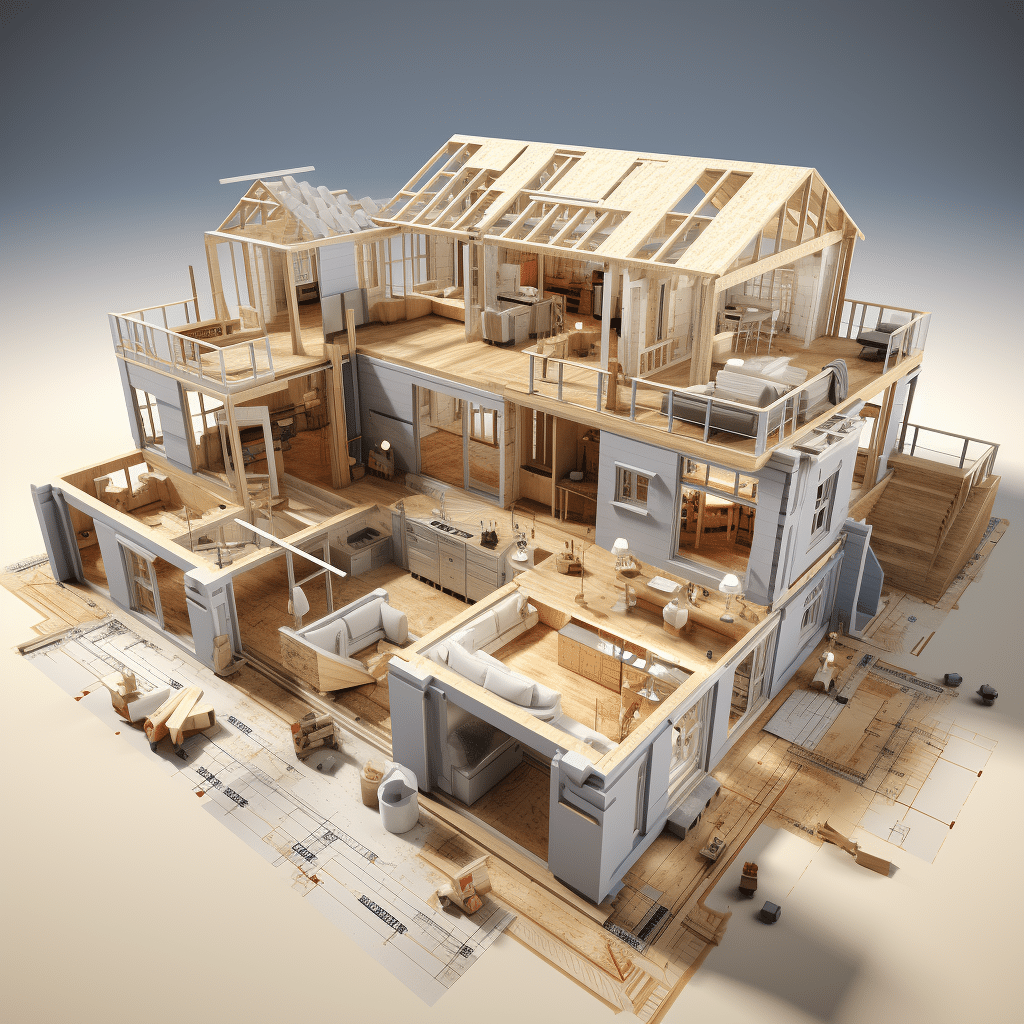
What type of loan is best for construction?
Oh boy, if you’re about to break ground on your dream home, you’ll want a construction loan that’s as sturdy as the foundation you’ll pour. Your best bet? A construction-to-permanent loan—kind of like a one-two punch, where you get the funds to build, and then it morphs into a regular ol’ mortgage when the hammers stop swinging.
What are the disadvantages of a construction loan?
Now don’t get scared off, but construction loans can be a bit of a tightrope walk. They’ve got higher interest rates, a shorter repayment period, and – get this – you’ve got to have a pretty solid plan and a budget that’s tighter than jeans after Thanksgiving. Plus, you only get the money in stages, so you gotta juggle those costs like a circus performer.
What is the difference between a mortgage and a new construction loan?
Think of it this way: a mortgage is like your classic love story—long-term, steady, pretty predictable. But a new construction loan? That’s the whirlwind romance—short, thrilling, a bit risky, since it’s all about putting up cash for something that doesn’t exist yet. Once the building’s done, that’s where Mr. Reliable Mortgage usually steps in.
What is a bridge loan and how do they work?
A bridge loan is kinda like a stepping stone across a financial river. You’re moving on to a new house but still stuck with the old one. So, the loan covers your new pad’s down payment, giving you time to sell your current digs without dropping the ball on your dream home. But watch your step—they usually have high-interest rates and shorter terms.
Why are construction loans hard to get?
Oh, the hoops you’ll jump through for a construction loan! They’re tough cookies because banks see them as riskier than a stroll in the park. You’ve got to show off a spotless credit report, a budget that’s tighter than a drum, and a contractor who won’t bail. Plus, you need a hefty down payment – no small potatoes!
What is different about a construction loan?
What’s the deal with construction loans? Well, they’re like snowflakes, unique from your run-of-the-mill loans. They’ve got a temporary vibe – just there while your home goes from blueprints to bricks—and the dough is doled out in stages based on your build’s progress. It’s not a ‘set it and forget it’ thing like other loans.
Should I shop around for a construction loan?
Absolutely, you should! Shopping around for a construction loan is kind of like dating—you’ve got to play the field to find the one that makes your heart sing and doesn’t wreck your wallet. Compare rates, terms, and how quickly they release funds. And don’t forget to flirt with those local banks and credit unions; they might just have the sweetest deal.
What happens to construction loan if bank fails?
Worst-case scenario time—if the bank hits the skids, your half-built palace shouldn’t tumble down with it. The government usually steps in faster than you can say “bailout,” and another bank will take over. Keep your fingers crossed, though, because there might be some hiccups along the way.
What is the advantage of a construction loan?
The big win with a construction loan? Flexibility! You’re not stuck paying for the whole enchilada upfront. Payments are sliced up as the construction rises, so you only pay interest on the bits and bobs you’ve actually used. It’s like having a tailor-made suit—fits your financial situation just right as you watch your dream home become reality.
Is it harder to get a construction loan than a mortgage?
Let’s not sugarcoat it; getting a construction loan is like threading a needle while riding a unicycle. It’s trickier than a mortgage because the bank’s taking a gamble on something that doesn’t exist yet. They’ll peek at your plans, poke around your finances, and probably ask for a higher down payment. It’s a bit of a high-wire act!
Are construction loan rates higher than mortgage rates?
Well, here’s the kicker: construction loan rates often have a little extra oomph compared to mortgage rates. They’re like that spicy sauce on your taco—adds some heat. It’s because banks are putting their necks out for a building that’s still just lines on paper, and they want to be paid for the thrill of the gamble.
Do construction loans convert to mortgages?
Yup, kind of like a caterpillar turning into a butterfly, many construction loans transform into mortgages once the dust settles. It’s called a construction-to-permanent loan, and it saves you the fuss of snatching up a new loan. Just make sure you understand how the metamorphosis works before you commit.
What is the credit score for a bridge loan?
When it comes to bridge loans, lenders wanna know you’re good for it, so a stellar credit score is key. We’re talking 680 or higher—you want to waltz in there with a credit score that’ll make lenders’ hearts sing.
Why would a homeowner take out a bridge loan?
Homeowners might snatch up a bridge loan as a sort of safety net. Say they stumble upon the house of their dreams but haven’t sold their current place yet. Snap! A bridge loan swoops in to cover the new home’s cost temporarily. It bridges the gap—it’s not a long-term solution but a nifty way to avoid a housing pickle.
What is the current prime mortgage rate?
Oh, the prime mortgage rate—that elusive number that’s as changeable as the weather. Check the latest financial forecasts because it shifts with the winds of the economy. Lenders use it as a baseline for various loans, so it’s essential to keep an eye on it just like you do with your favorite team’s scores.
What are the two types of loans used to finance the construction of a property?
When it comes to financing your build, it’s typically down to two players: construction-only loans, where you get the cash in stages and have to settle the bill once the building’s done; and construction-to-permanent loans, which we’ve chatted about already, where your loan goes the distance and becomes a mortgage.
Is it easier to get a construction loan than a mortgage?
Easier to get a construction loan than a mortgage? In your dreams! Construction loans are the high-maintenance cousins. They demand a near-perfect credit score, detailed plans, a hefty down payment, and a builder with a clean track record. So strap in and get your ducks in a row—this ride’s a bit bumpier.
What type of loan is best for building a barn?
Thinking about a home for your heifers? For building a barn, you might look into a farm or agricultural loan—they’re designed just for folks who want to improve their slice of country paradise. These specialized loans understand the ins and outs of farm life better than most.
What is a permanent loan taken out after the construction loan called?
After the dust of construction settles, you’ll want to jazz it up with a permanent loan, often known as a “takeout” or “end” loan. It’s that final round of applause after your building’s big debut, stepping in to replace the construction loan and give you a regular mortgage that you can cozy up with for the long haul.



